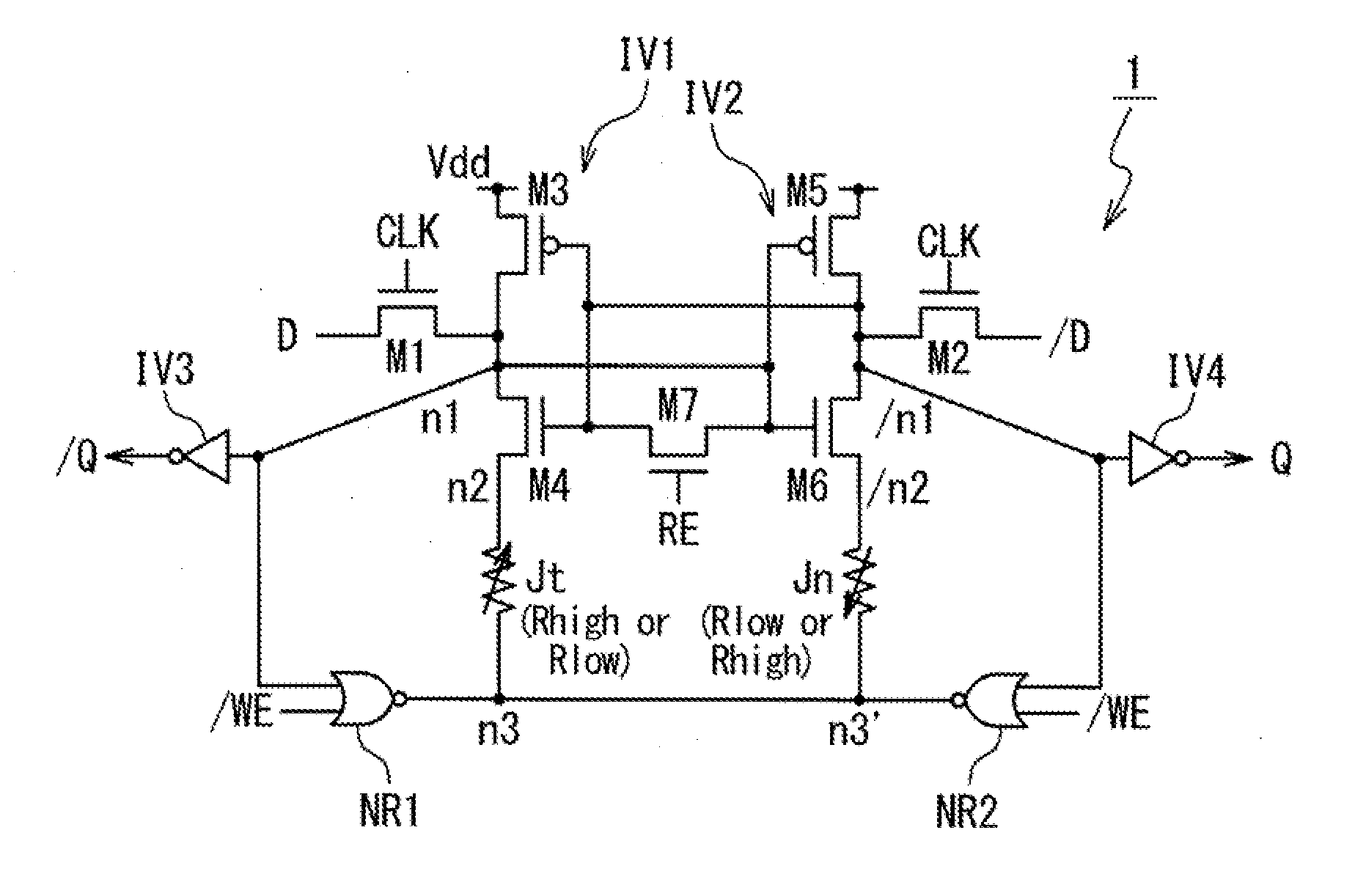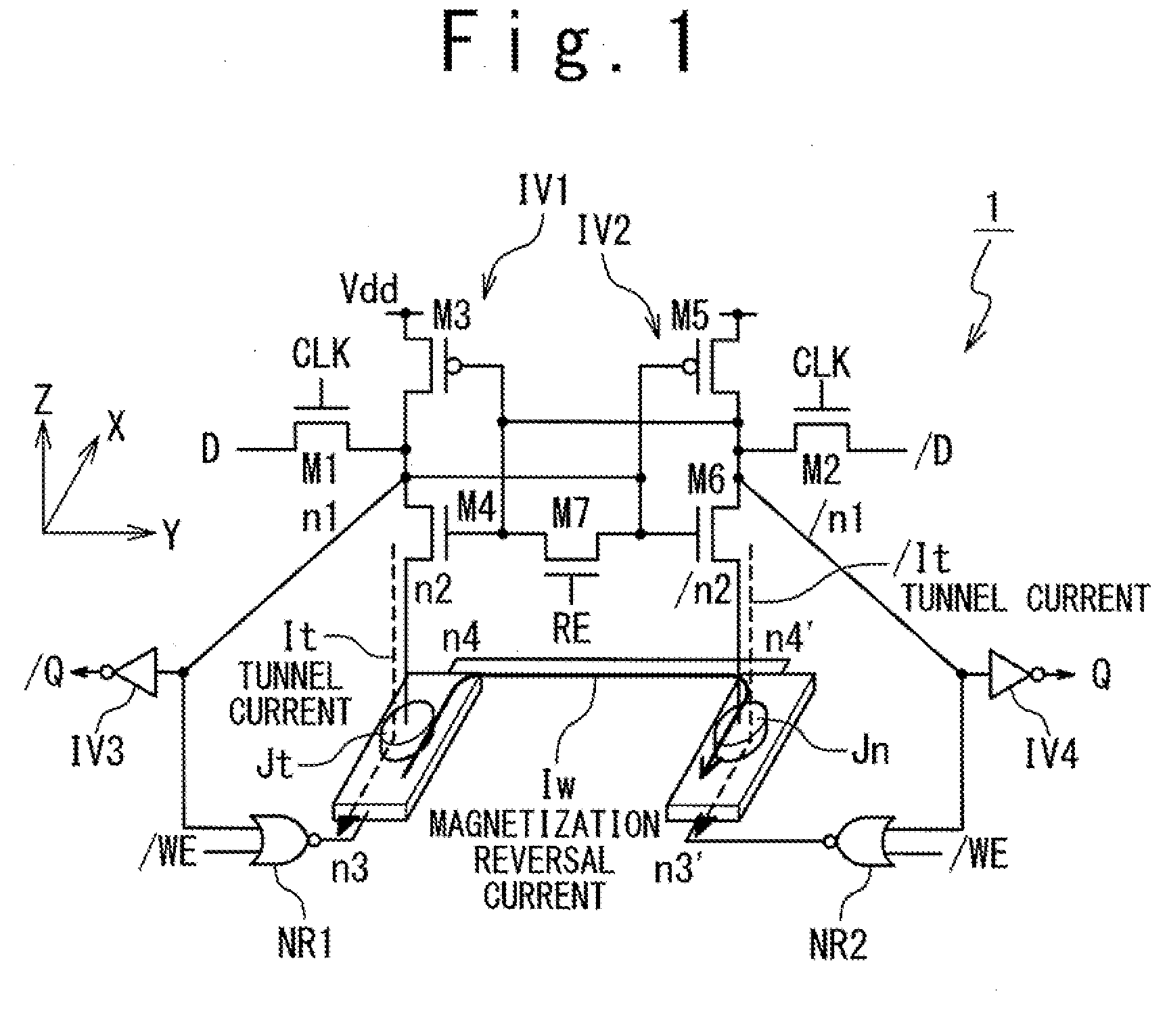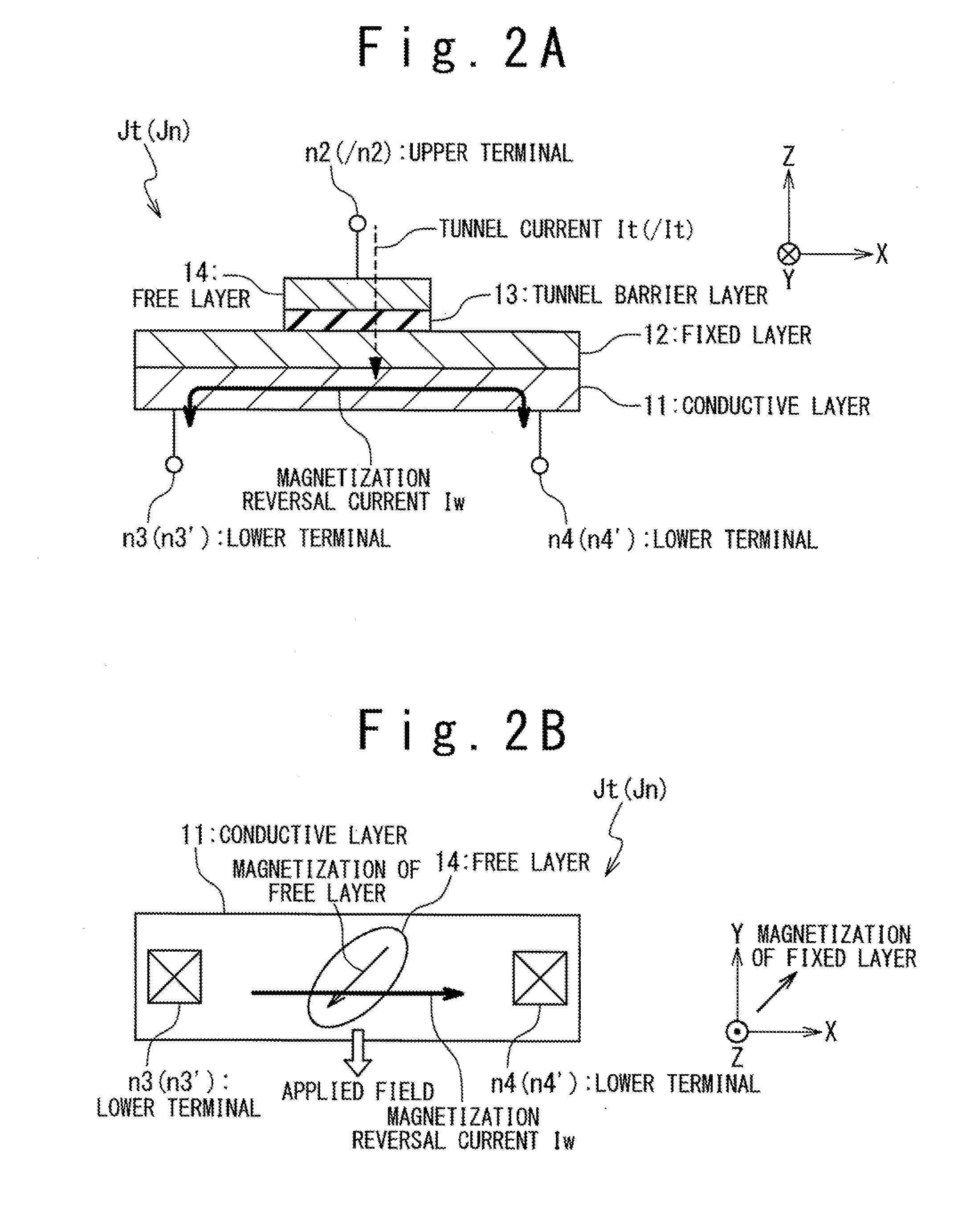Nonvolatile latch circuit
a latch circuit and non-volatile technology, applied in the field of non-volatile latch circuits, can solve the problems of increasing operating power, data and processed data potentially disappearing, and complicating power control, so as to reduce the magnetization reversal current
- Summary
- Abstract
- Description
- Claims
- Application Information
AI Technical Summary
Benefits of technology
Problems solved by technology
Method used
Image
Examples
first embodiment
[0025]FIG. 1 is a basic configuration view illustrating a nonvolatile latch circuit 1 in a first embodiment of the present invention. The nonvolatile latch circuit 1 includes two MTJ elements Jt, Jn, NMOS transistors M1, M2, M4, M6, M7, PMOS transistors M3, M5, NOR gates NR1, NR2 and inverters IV3, IV4.
[0026]The MTJ elements Jt and Jn are used to store data in the nonvolatile latch circuit 1 when power is not supplied to the nonvolatile latch circuit 1. In this embodiment, the MTJ elements Jt and Jn are configured as a three terminal element. Specifically, the MTJ element Jt includes an upper terminal n2 and two lower terminals n3, n4, and the MTJ element Jn includes an upper terminal / n2 and two lower terminals n3′, n4′. The lower terminals n4 and n4′ of the MTJ elements Jt and Jn are connected to each other through an interconnection. As described later, a tunnel current It passing through the MTJ formed within the MTJ element Jt flows from the upper terminal n2 to the lower termi...
second embodiment
[0053]In a second embodiment of the present invention, a nonvolatile latch circuit of the present invention is configured so as to operate as a delay flipflop (D-FF). A nonvolatile D flipflop circuit 1C in the second embodiment has a configuration in which a commonly-used master-slave typed D-FF is modified to use the high-through nonvolatile latch circuit 1 shown in FIG. 4 as a slave latch.
[0054]In detail, the nonvolatile D flipflop circuit 1C in the second embodiment includes a master latch 31, a slave latch 32 and inverters IV22 to IV24. The master latch 31 includes clocked inverters CI1, CI2 and an inverter IV21.
[0055]The clocked inverter CI1 includes PMOS transistors M21, M22, NMOS transistors M23 and M24. The input data D are supplied to the gates of the PMOS transistor M21 and the NMOS transistor M24. A non-inverted signal p1 of the clock signal CLK is inputted to the gate of the PMOS transistor M22 and the inverted signal / p1 of the clock signal CLK is inputted to the gate o...
PUM
 Login to View More
Login to View More Abstract
Description
Claims
Application Information
 Login to View More
Login to View More - R&D
- Intellectual Property
- Life Sciences
- Materials
- Tech Scout
- Unparalleled Data Quality
- Higher Quality Content
- 60% Fewer Hallucinations
Browse by: Latest US Patents, China's latest patents, Technical Efficacy Thesaurus, Application Domain, Technology Topic, Popular Technical Reports.
© 2025 PatSnap. All rights reserved.Legal|Privacy policy|Modern Slavery Act Transparency Statement|Sitemap|About US| Contact US: help@patsnap.com



